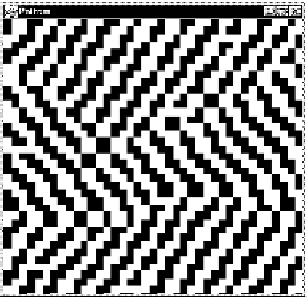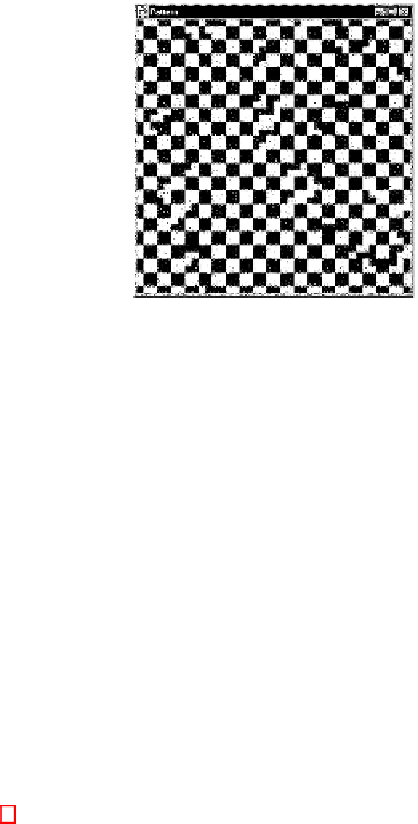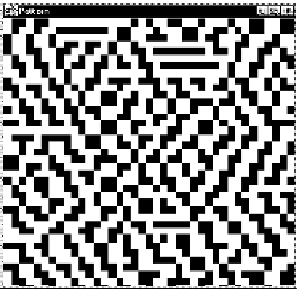Information Technology Reference
In-Depth Information
Fig. 5.
TwodifferentbehaviorsevolvedinaDissipativeCellularAutomaton,large-scale
patterns emerge. The left picture shows a step of a dynamic pattern, with horizontally
translating diagonal stripes.
Fig. 6.
A stabilized situation in an asynchronous close cellular automaton following
the same rules of the DCA in Fig. 5: no large-scale patterns emerge.
is that DCA's transition function is deterministic and the non-determinism is
introduced by external perturbations. The DCA model enables us to describe
systems composed of several independent interacting entities (asynchronous and
concurrently acting)which can be affected by external perturbations.
Behaviors similar to the ones we observed in DCA have also been obtained
for synchronous CA in [20], where long-range patterns are generated by means of
peculiar transition functions which explicitly introduce symmetry-breaking rules.
Therefore, even though the observed behavior is similar, the emergence of macro-
level spatial structures has a different origin: in our case, no symmetry-breaking
rules are introduced and the regular patterns are generated by the combination
of “symmetric” transition functions, asynchrony and external perturbation.



